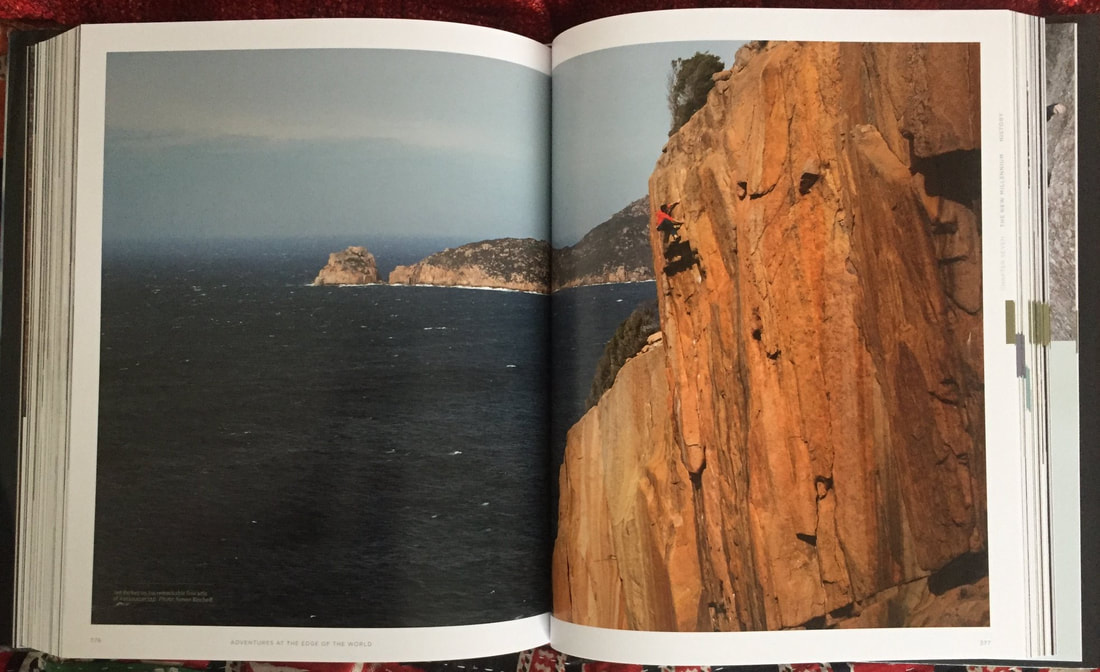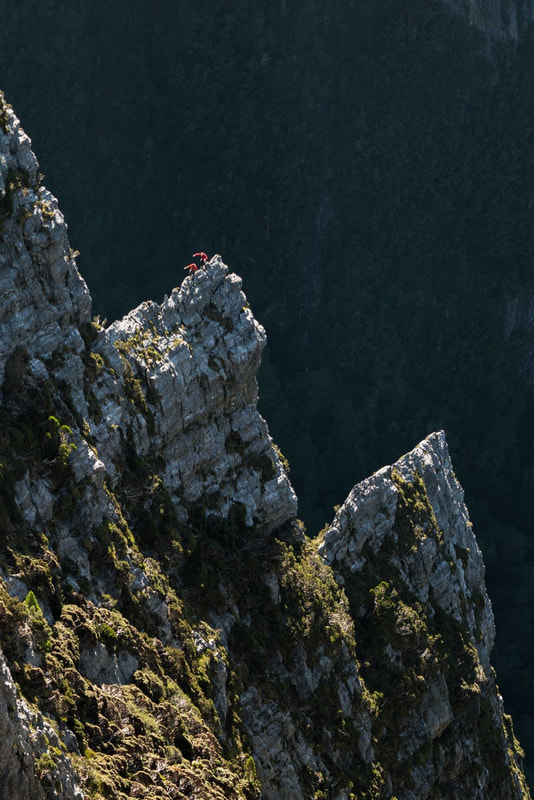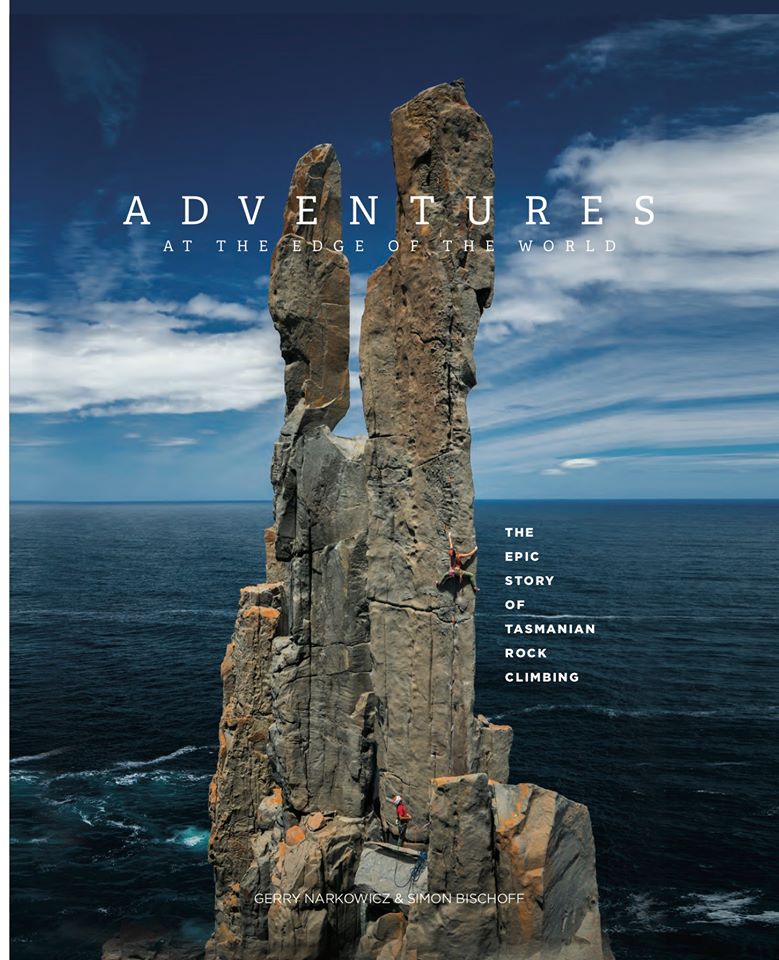|
Tasmania, an oft-forgotten apple shaped island State lying below the south-eastern mainland of Australia looking southward towards Antarctica; a vast, rugged wilderness littered with crags, cliffs, mountains often overlaid by inclement weather. It is a place where there are many steep excursions and adventures to be had. Names such as Federation Peak, Frenchmans Cap, Mt Geryon, Stacks Bluff, Flinders Island, and the diminutive Totem Pole among many others have been central to the Tasmanian story for the weighty escapades and the undertakings associated with them.
For the international Common Climber some of these are home to the biggest, most isolated climbs in Australia; But only the Totem Pole, the world’s biggest matchstick, has really featured on the world stage. Of great interest then to overseas and Australian climbers is that the Tasmanian climbing story is now comprehensively presented in a recently released book. The book is Adventures at the Edge of the World: The Epic Story of Tasmanian Rock Climbing by Gerry Narkowicz and Simon Bischoff (Editors). As the title suggests, everything about this book is big, including many of the climbs. At 3.2 kilograms and larger in area than A4 with almost 540 pages, it, in many ways transcends the classic coffee table book by requiring a much larger, stronger table to be employed when reading it. |
|
While the book is a weighty tome, it should be gauged by what it contains between the covers. As with many of the books of this type the photographs are always the first to reveal themselves.
And here Simon Bischoff has excelled. The columnar nature of dolerite rock makes for spectacular towers and Simon’s cover photo is particularly stunning; an amazing portal to his and many by others contained within. They present an impressive portfolio of achievement in terms of the images he has captured or used of climbers and their vertical hangouts in the Tassie environment. And Simon is not without compatriots: Dave Neilson, Bob McMahon, Reg Williams, Keith Lancaster and many others have provided some beautiful as well as historical shots that are liberally scattered throughout its pages. There is certainly plenty to look at in terms of stunning mountains and rock as well as some of the sometimes feral characters that have inhabited and ascended them. But what of the text? |
After the obligatory foreword, preface and acknowledgements followed by a very useful map of Tasmania showing the location of climbing areas, a list of contents, and a chronological overview, the editors, Gerry and Simon have written articles as a precursor to the main proceedings. What follows then is a veritable feast of climbing articles spanning the decades from the turn of the last century to the present day provided by 69 authors. Many of these are absolute classics and all are worth a read. The production and clarity of the work that contains them is ‘second to none’ and sets a new standard in Australian climbing publications.
However, I also came away with the feeling that the book had exceeded a ‘critical mass’ and some judicious editing was perhaps required to make it less wieldy. That said though, one could feel the love that the editors have lavished on their work.
In many ways the book is an assault on the senses and I don’t mean that in a negative sense. For the aficionadas’ of climbing history whether here or overseas it will be an absolute delight to read for many a long day but this then places it into a narrow niche market. My concerns are that the book is too big, too heavy and too expensive to capture a wider secular market and clientele. This is an observation rather than a criticism. While there are many articles available on Australian climbing, books of this scope are spread thinly on the ground. Gerry and Simon have produced a welcome and stunning addition to the perhaps threadbare Australian section of any climbers’ bookshelf.
However, I also came away with the feeling that the book had exceeded a ‘critical mass’ and some judicious editing was perhaps required to make it less wieldy. That said though, one could feel the love that the editors have lavished on their work.
In many ways the book is an assault on the senses and I don’t mean that in a negative sense. For the aficionadas’ of climbing history whether here or overseas it will be an absolute delight to read for many a long day but this then places it into a narrow niche market. My concerns are that the book is too big, too heavy and too expensive to capture a wider secular market and clientele. This is an observation rather than a criticism. While there are many articles available on Australian climbing, books of this scope are spread thinly on the ground. Gerry and Simon have produced a welcome and stunning addition to the perhaps threadbare Australian section of any climbers’ bookshelf.
To see a video about the book by one of the editors: https://vimeo.com/345155932



